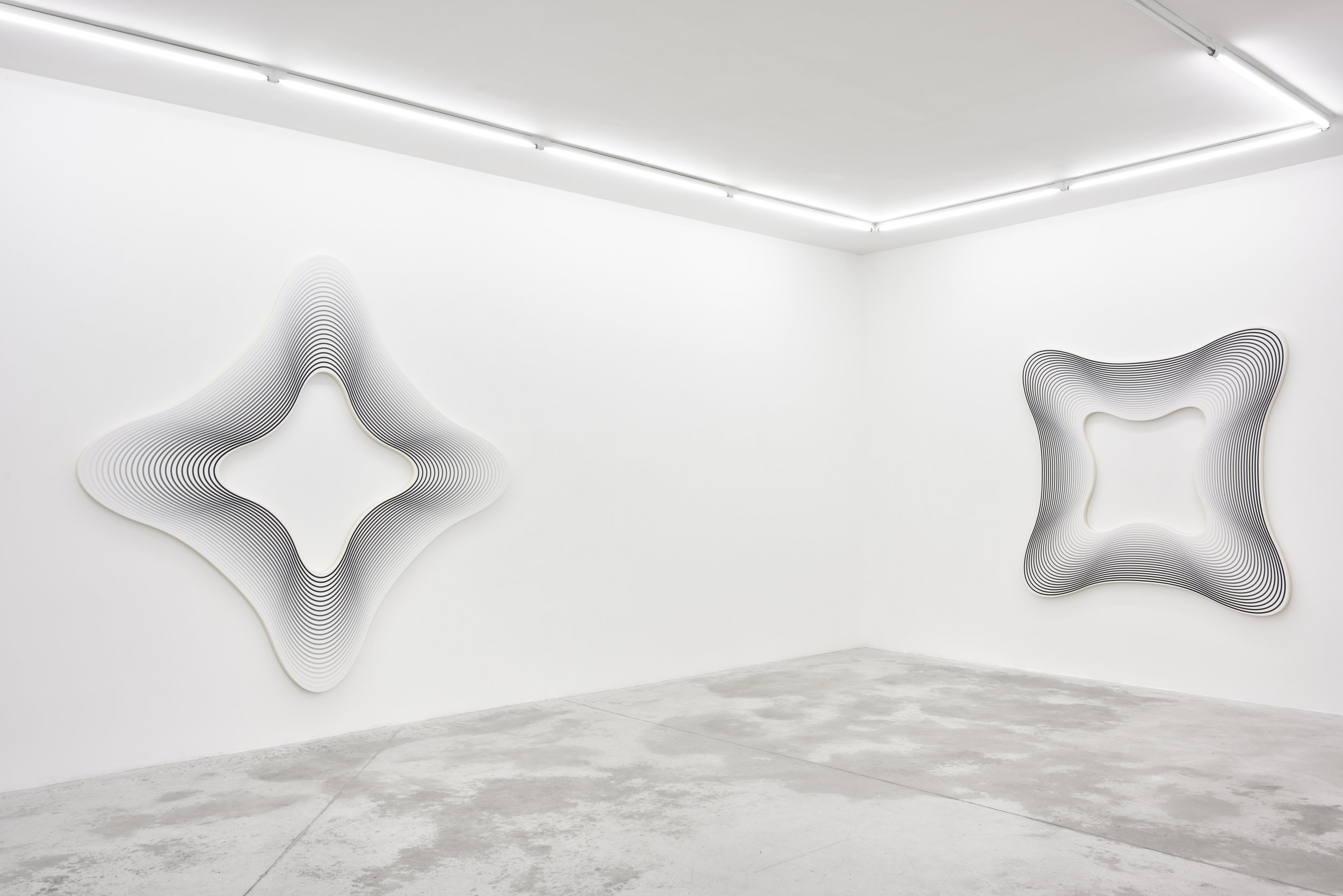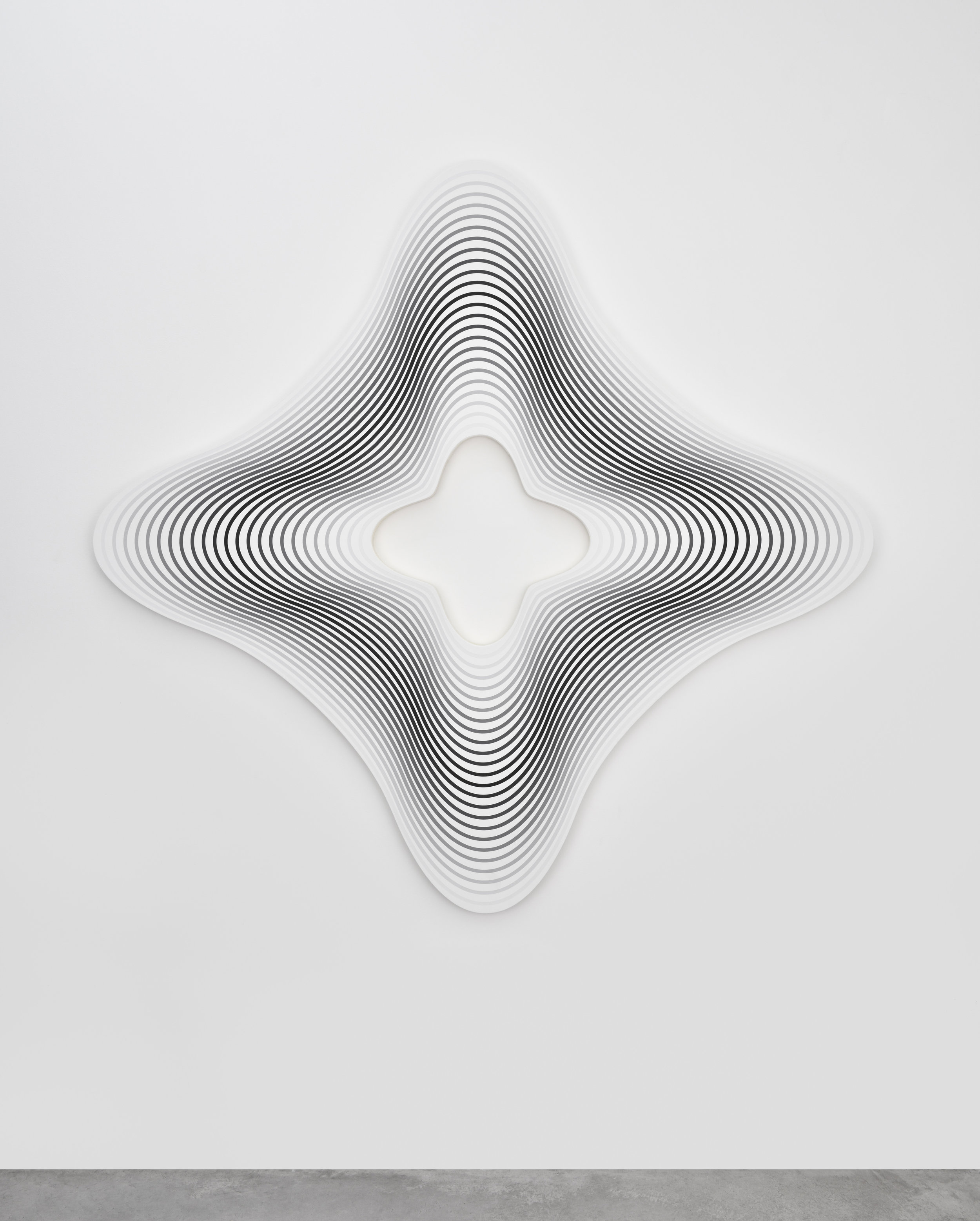PHILIPPE DECRAUZAT
DELAY
Paris
14 October – 25 November 2017
Delay, Philippe Decrauzat’s new series of paintings suggests that an aesthetic renewal may well be underway, but not one that entirely disrupts his artistic language, nor the narrative that he has been endeavouring to establish since his beginnings. If the form is unchanged, the spatiality of his work has evolved to adapt to a core derived from the same matrix. His aesthetic approach makes good use of the formal resemblance of which Heidegger was so fond, asking the fundamental question of humankind’s penchant for structuring itself in terms of its temporality and relationship to time. Proof of this lies in the resemblances that Decrauzat reveals in this exhibition in which six paintings are presented to the spectator’s longing gaze in formats that may be different, but which are all part of the same logic; a formal resemblance captured at different moments. The visible and the invisible. In Decrauzat’s work, there is an obvious similarity to that of Maurice Merleau-Ponty and his philosophy of the phenomenology of perception: we must go back to the things themselves!
Bearing witness to an extreme rigour, 24 lines reference his previous exhibitions: 24 lines tinted in shades of grey. White becomes black, black turns grey and a gradation opens the way to contracted, or even retracted effects that induce a sort of slow motion pulsation. Decrauzat rarely wanders far from his fundamentals: images, sound and film. The notion of 24 images per second is an integral part of his means of expression, one through which he distils the essence of his relationship with time — fractions of time, 24 hours, a symbolic notion, the account of man’s experience of space and the world — constructing an allegorical story in connection with the temporality of his own language and free of emotional agitation. There is nothing here which takes us back to the artificial sign or that tries to reduce this language to the sole expression of emotions.
Delay is a new story, one which, as its name suggests, courts with the idea of lateness. The artist imposes his prose in a diktat for which he takes full responsibility and in which he imagines that we are ready to read, observe and experience the immediacy of visual effects. Decrauzat awakens within us the experience that harks back to the subject of the work itself, like a distinct condition without which there would be no question of a source of intrinsic truth. His truth.
— René-Julien Praz











